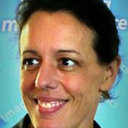A 10-year experience in paediatric spontaneous cerebral hemorrhage: which children with headache need more than a clinical examination?
Ключови думи
Резюме
BACKGROUND
When a child is seen in a clinic with a headache, stroke is certainly not the first on the list of differential diagnoses. In western countries, stroke is typically associated with adults and the elderly. Although rare, haemorrhagic strokes are not exceptional in the paediatric population, as their incidence is around 1/100 000/year. Prompt diagnosis is essential, since delayed treatment may lead to disastrous prognosis in these children.
METHODS
This is a retrospective review of paediatric cases with spontaneous cerebral haemorrhage that presented in two university hospitals in the last ten years. The experience of these primary and tertiary referral centres comprises 22 consecutive cases that are analysed according to aetiology, presenting symptoms, treatment and outcome.
RESULTS
77% of the children diagnosed with haemorrhagic stroke presented with headaches. 41% of them had a sudden onset, while 9% developed headaches over a period of hours to weeks. While 9% presented only with headaches, the majority had either subtle (diplopia, balance problems) or obvious (focal deficits, unilateral weakness and decreased level of consciousness) concomitant neurological signs. 55% had an arteriovenous malformation (AVM), 18% had an aneurysm and 14% had a cavernous malformation. In 14% the aetiology could not be determined. The majority of haemorrhages (82%) were supratentorial, while 18% bled into the posterior fossa. All children underwent an emergency cerebral CT scan followed by specific investigations. The treatment was dependent on the aetiology as well as the mass effect of the haematoma. In 23% an emergent evacuation of the haematoma was performed. Two children (9%) died, and 75% had a favourable clinical outcome.
CONCLUSIONS
Headaches in children are a common problem, and a small minority may reveal an intracranial haemorrhage with poor prognosis if not treated promptly. Although characterisation of headaches is more difficult in a paediatric population, sudden, unusual or intense headaches should lead to imaging work-up. Any neurological finding, even one as subtle as hemianopsia or dysmetria, should alarm the physician and should be followed by emergency imaging investigation. If the cerebral CT reveals a haemorrhage, the child should be referred immediately to a neurosurgical referral centre without further investigation. The outcome is grim for children presenting in coma with fixed, dilated pupils. The long-term result overall for children after spontaneous intracranial haemorrhage is not dismal and depends critically on specialised management.


